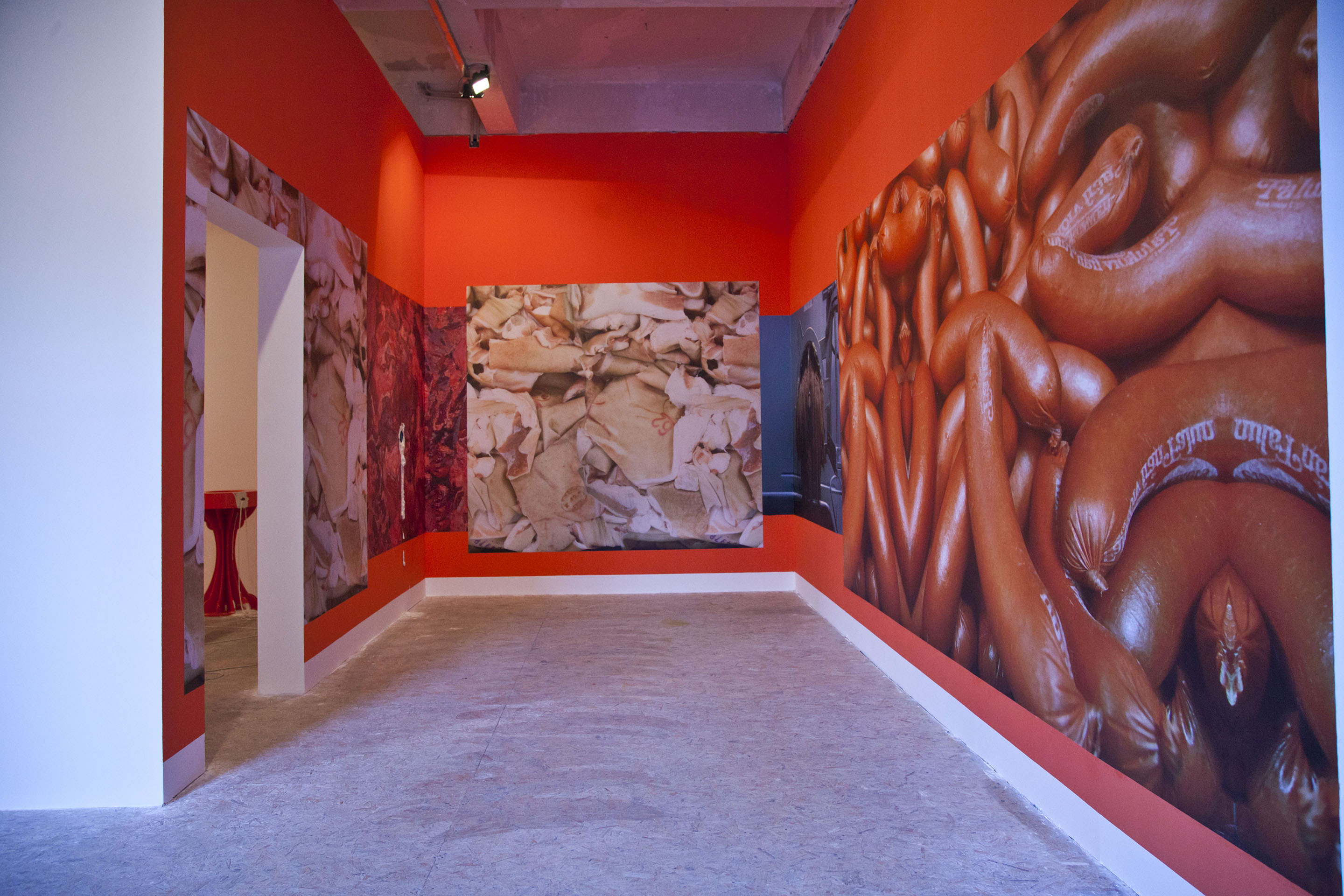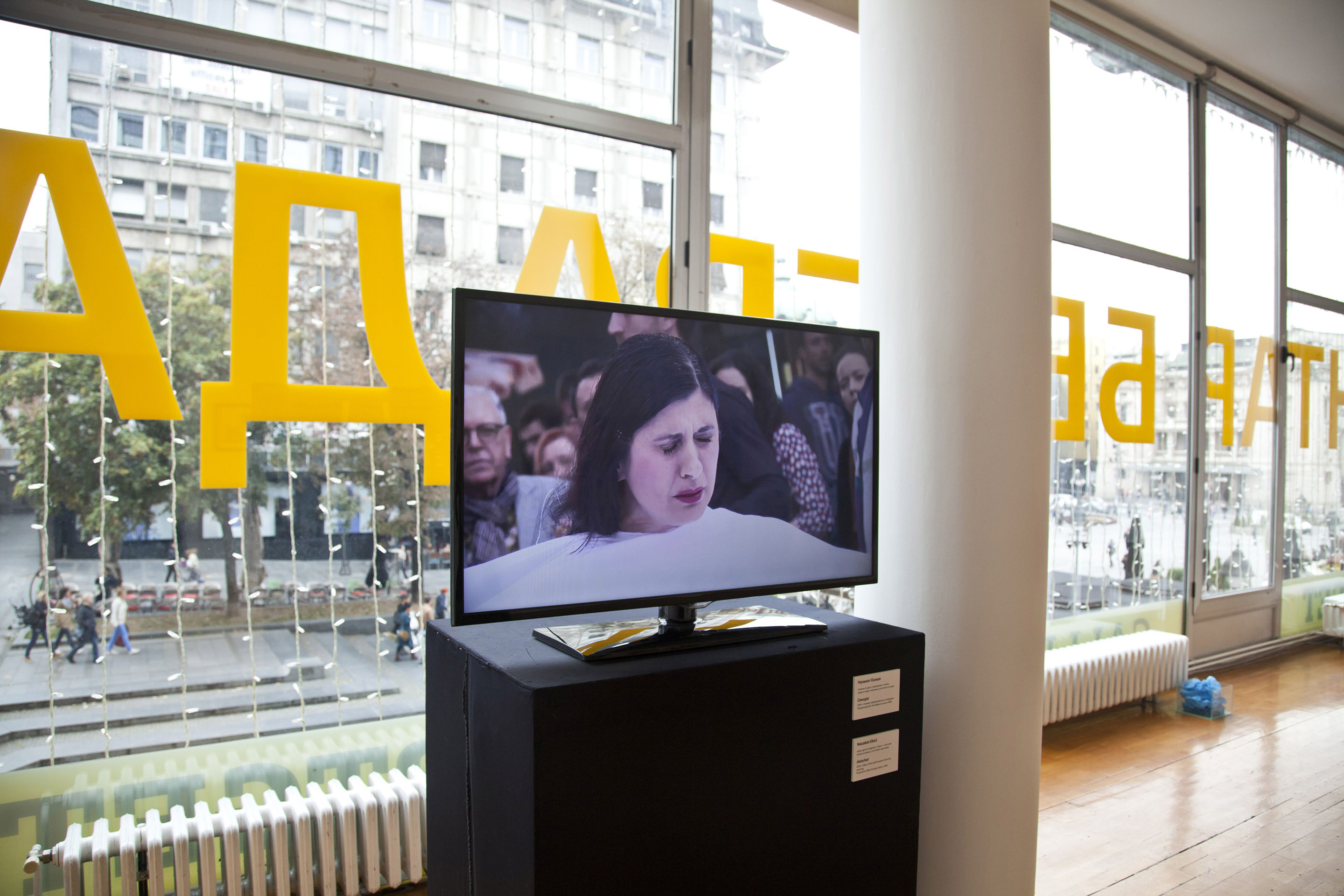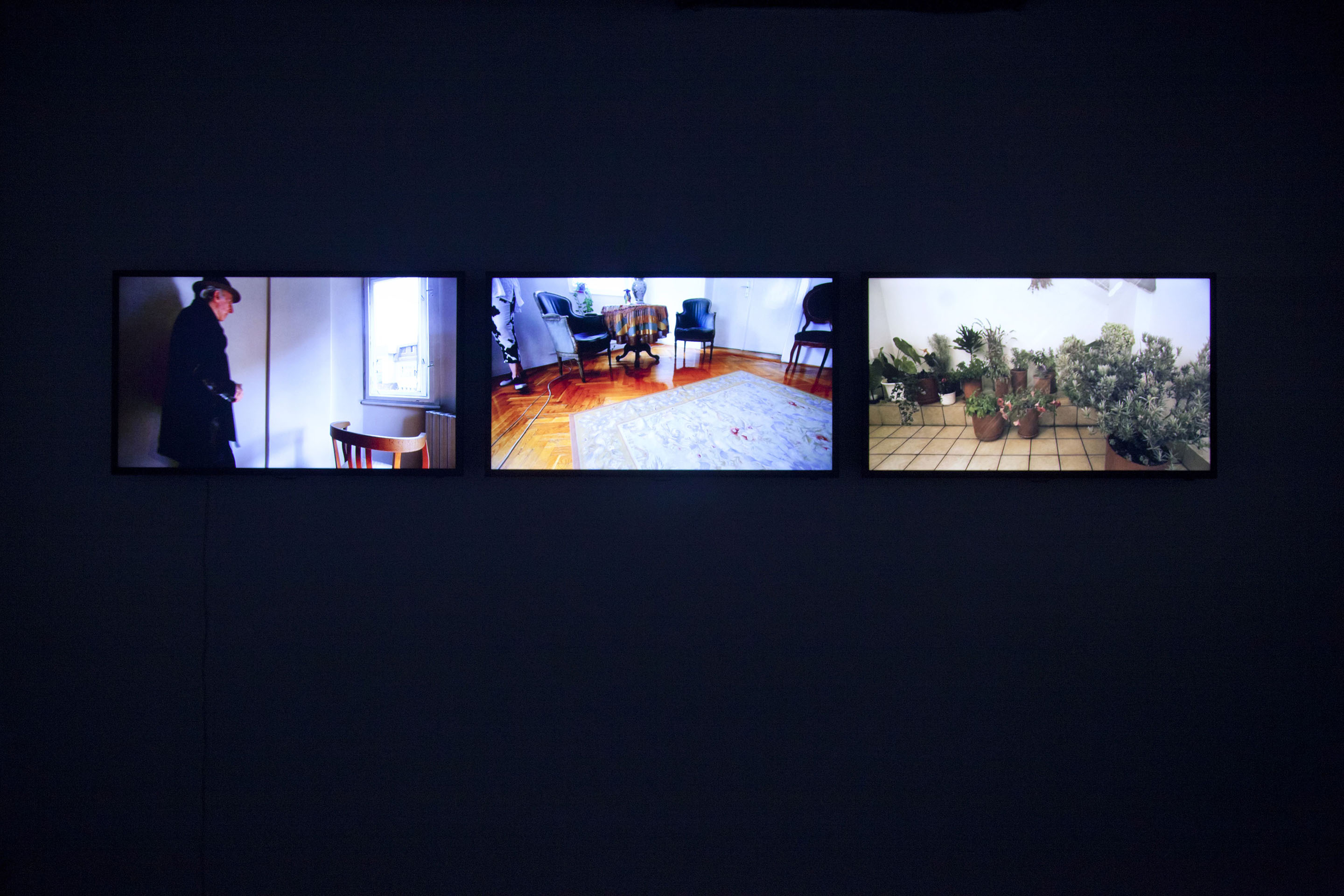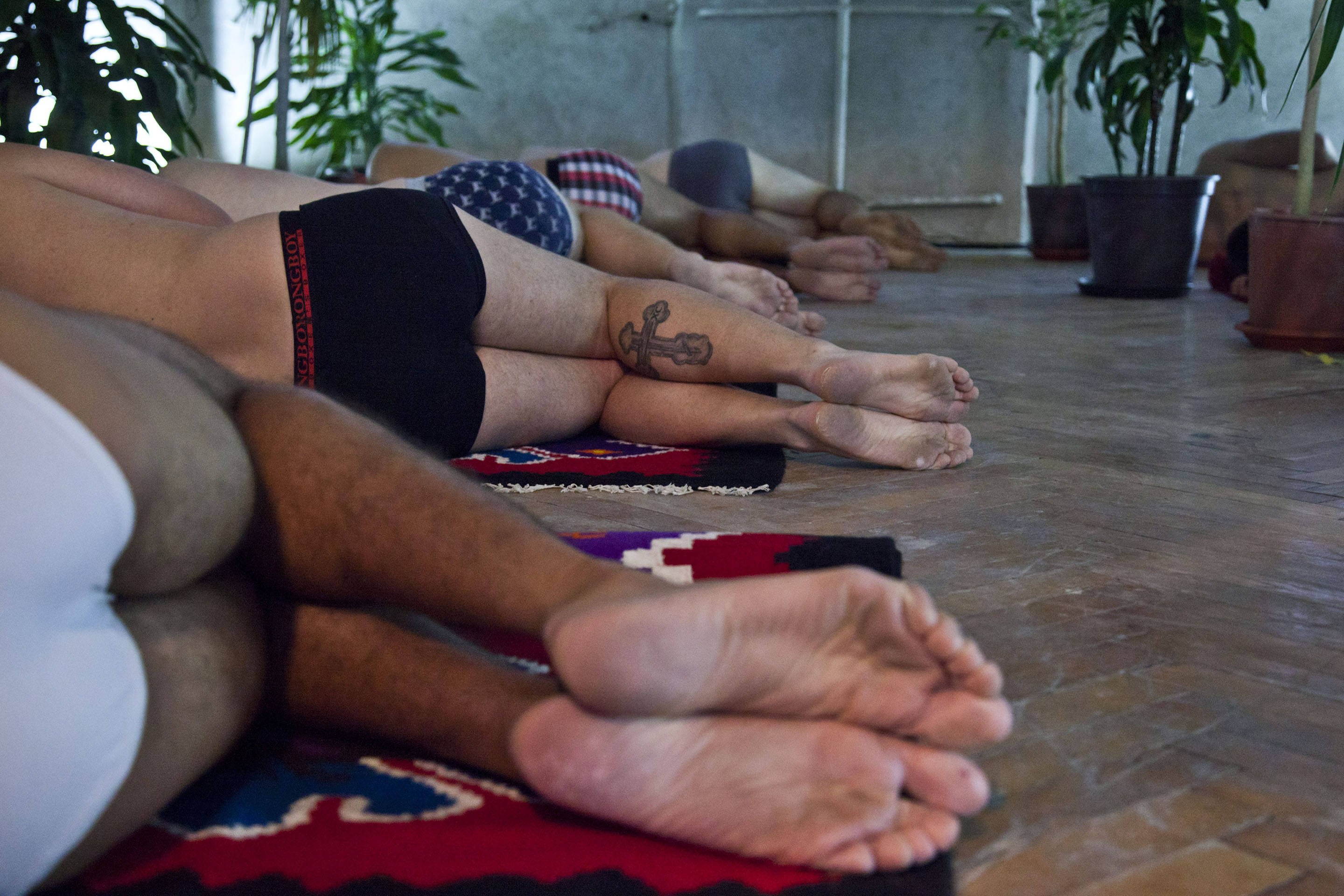56th Belgrade October Salon

56th Belgrade October Salon, September 23-November 6, 2016
The October Salon is the flagship event on the Belgrade contemporary art calendar, maybe the entire cultural calendar in the city. It was founded by the City of Belgrade in 1960 as an exhibition of contemporary fine arts, and by 1967 it also included applied arts. It was not until 2001 that an artistic director was engaged to create the concept of the Salon, as prior to that the Salon’s advisory board was responsible for conceiving the exhibition. Until 2005 the Salon was a representation of the Serbian art scene, after which it was given an international approach and character. Now in 2016, after a yearlong break, the Salon is back for its 56th edition in the form of a biennial.
The curator chosen to organize this edition was David Elliott, a British specialist in Soviet and Russian avant-garde art, as well as modern and contemporary Asian art. Elliott was the artistic director of the 17th Biennale of Sydney and the artistic director of the 4th Moscow International Biennale of Young Art, among other appointments. For the October Salon, he chose the theme The Pleasure of Love: Transient Emotion in Contemporary Art, a rather generic conception that is not developed very comprehensively in the curator’s written statement: “… the 56th Belgrade October Salon focuses on love, the exact opposite of such hateful characteristics, as both a subject and prism through which to view the world.”(http://oktobarskisalon.org/concept-2/) “Love” is so broad and agreeable a theme that one cannot really go wrong with it, as is “pleasure.” Seemingly, it is more marketable than a program dedicated to “contempt” or “pain.” Still, one feels the absence of a challenge, a shake-up of the status quo, or an incisive questioning, as suggested by the following statement by Elliot:
As gestures, actions, images or objects, the works in this exhibition touch on, refer to, reflect, refashion, parody or critique ideas, ideologies, beliefs, stereotypes, prejudices and ‘common wisdoms’ with one inimitable imperative: that what results should be ‘good’ as art, in whatever sense this may be understood.(Ibid.)
One can make the safe assumption that the curator was not in search of “bad” art, in whatever sense that may be understood. A quote by the Soviet avant-gardist Dziga Vertov comes to mind: “What’s good is not what’s really good, but that which is profitable to consider as such.”(Annette Michelson (ed.), Kino-eye: The Writings of Dziga Vertov, translated by Kevin O’Brien (Berkeley-Los Angeles: University of California Press, 1984), 264.)
 The most important feature and task of the Salon is to bring a dynamic selection of international contemporary art to Serbia, to bring interesting artists to interact with the local scene, and to give local artists a larger and more consequential platform alongside their international colleagues. More than sixty artists or artist teams were included in the Salon. As in the last edition, the main venue of the Salon was the Belgrade City Museum, a former military academy recently consigned by the Ministry of Defense to the city for accommodating the museum. After multiple bombings over the course of the twentieth century the building has seen better days, and it is scheduled for a thorough restoration. Given Belgrade’s reputation for the restoration of cultural institutions, particularly its museums, one might not expect action or results in the foreseeable future. So the building’s rough charms and unkempt style may have to serve another Salon or two. The Salon’s other major venue was the Belgrade Cultural Center, which is also the organizer of the biennial. The Belgrade Cultural Center has been a foundation in the city since the 1950s, and one can always count on engaging exhibits within its various galleries, as well as a consistent repertoire of outstanding international cinema in its screening space. The Salon program actually opened in the street in front of the Cultural Center with the performance Hatchet by Nezaket Ekici (born in Turkey, lives and works in Germany), in which the artist slowly splits a long white sheet held in place by ten assistants. In retrospect, the piece seems akin to an aestheticized ribbon-cutting ceremony. Ekici also had two video performances selected for the Salon, Salt Dinner (2012) and Lublin Beach (2016), both co-created with her collaborator Shahar Marcus (born, lives and works in Israel). These pieces depict the acts of cooking and eating offset by the relative inhospitality of the locations chosen: a dinner takes place in a body of water; a beach barbeque takes place in the dead of winter. Pleasure is certainly engaged with here, as is the supposed love between the two performers who appear as a couple.
The most important feature and task of the Salon is to bring a dynamic selection of international contemporary art to Serbia, to bring interesting artists to interact with the local scene, and to give local artists a larger and more consequential platform alongside their international colleagues. More than sixty artists or artist teams were included in the Salon. As in the last edition, the main venue of the Salon was the Belgrade City Museum, a former military academy recently consigned by the Ministry of Defense to the city for accommodating the museum. After multiple bombings over the course of the twentieth century the building has seen better days, and it is scheduled for a thorough restoration. Given Belgrade’s reputation for the restoration of cultural institutions, particularly its museums, one might not expect action or results in the foreseeable future. So the building’s rough charms and unkempt style may have to serve another Salon or two. The Salon’s other major venue was the Belgrade Cultural Center, which is also the organizer of the biennial. The Belgrade Cultural Center has been a foundation in the city since the 1950s, and one can always count on engaging exhibits within its various galleries, as well as a consistent repertoire of outstanding international cinema in its screening space. The Salon program actually opened in the street in front of the Cultural Center with the performance Hatchet by Nezaket Ekici (born in Turkey, lives and works in Germany), in which the artist slowly splits a long white sheet held in place by ten assistants. In retrospect, the piece seems akin to an aestheticized ribbon-cutting ceremony. Ekici also had two video performances selected for the Salon, Salt Dinner (2012) and Lublin Beach (2016), both co-created with her collaborator Shahar Marcus (born, lives and works in Israel). These pieces depict the acts of cooking and eating offset by the relative inhospitality of the locations chosen: a dinner takes place in a body of water; a beach barbeque takes place in the dead of winter. Pleasure is certainly engaged with here, as is the supposed love between the two performers who appear as a couple.
In the Cultural Center galleries, one could find a majority of video installations in the basement, a strong presence of photography on the top floor, and different manners of collage in the streetside gallery. Almost Nothing (2016) by the brilliant Croatian film and video artist Ana Hušman was on display. A series of neutral images of landscapes and architecture, this work is very much in the gallery mode, receptive to lay viewing, as opposed to her masterly films that are made for the cinema. The video ends with a brief sound study, in which a microphone is used to test the resonance of wind and other natural audio effects upon the environment, while the images are projected with increased speed, almost as if the landscape has become a canvas and the grassy hills and trees have been animated by the artist’s hand.
 One of the most interesting video installations was the three-channel piece Entanglement Games (2010-2016) by Serbian Jovan ?eki?. Displayed on three high-definition monitors placed side-by-side at eye level, the quality of presentation was outstanding, as opposed to the many installations mired in low-level projection beams in less than optimal lighting conditions. The first monitor details a man sitting facing a window, the second features a nondescript domestic space, and the third depicts potted plants with majestic rays of sunlight streaming through their leaves. There is a sparse cinematic minimalism characterizing the piece, akin to the films of Jean-Marie Straub and Daniele Huillet, particularly in terms of tone and surface aesthetic. However, ?eki?’s work is not overtly political or polemical.
One of the most interesting video installations was the three-channel piece Entanglement Games (2010-2016) by Serbian Jovan ?eki?. Displayed on three high-definition monitors placed side-by-side at eye level, the quality of presentation was outstanding, as opposed to the many installations mired in low-level projection beams in less than optimal lighting conditions. The first monitor details a man sitting facing a window, the second features a nondescript domestic space, and the third depicts potted plants with majestic rays of sunlight streaming through their leaves. There is a sparse cinematic minimalism characterizing the piece, akin to the films of Jean-Marie Straub and Daniele Huillet, particularly in terms of tone and surface aesthetic. However, ?eki?’s work is not overtly political or polemical.
 The Belgrade City Museum, the site of the Salon’s grand opening, offered some memorable works on the first floor. Swedish artist Peter Johansson’s delirious mixed-media installation, Let Us Now Rest and Await Guidance From Above! (2016), included large-format images of raw meats and sausages on view in the first chamber. Enter the next chamber, teased by a hole in the wall and a strange mechanical device penetrating the meat portraits, and the viewer is situated in a facsimile of a Catholic church, painted completely in red, with white phallic-like automated apparatuses boring holes into everything from the pews to the altar. This installation was maybe the most inexplicable and the most disturbing work in the Salon; it also one of the more dynamically immersive. Here, the pleasure of consumption was evoked by the excess of meat, and the love of religion and institutions could be contemplated via the walk-in church. However, both pleasure and love were ultimately punctured, as they were in the previously described Hatchet, although in Johansson’s work the final effect was more critical and subversive, certainly more dramatic.
The Belgrade City Museum, the site of the Salon’s grand opening, offered some memorable works on the first floor. Swedish artist Peter Johansson’s delirious mixed-media installation, Let Us Now Rest and Await Guidance From Above! (2016), included large-format images of raw meats and sausages on view in the first chamber. Enter the next chamber, teased by a hole in the wall and a strange mechanical device penetrating the meat portraits, and the viewer is situated in a facsimile of a Catholic church, painted completely in red, with white phallic-like automated apparatuses boring holes into everything from the pews to the altar. This installation was maybe the most inexplicable and the most disturbing work in the Salon; it also one of the more dynamically immersive. Here, the pleasure of consumption was evoked by the excess of meat, and the love of religion and institutions could be contemplated via the walk-in church. However, both pleasure and love were ultimately punctured, as they were in the previously described Hatchet, although in Johansson’s work the final effect was more critical and subversive, certainly more dramatic.
Progressing to the upper level of the museum one could find the work Fragile Presence (2016) by the outstanding artistic duo Rena Rädle (born in Germany, lives and works in Serbia) and Vladan Jeremi? (born, lives and works in Serbia). Their cartoony, black-and-white wall drawings depict immigrants coming into conflict with the various solid borders around Fortress Europa, in some cases smashing those fortified walls with star-tipped columns. The artists brought this picture into three dimensions with large blocks stacked around the exhibition space that included extensions of the drawings – in some cases those blocks represent pieces of the smashed border walls. As is often the case with the artists’ practice, they also offered a newspaper handout that includes reproductions of some of the wall drawings, as well as a polemical text about their work and the current social context it is crafted within. With Fragile Presence the curatorial theme of pleasure/love, at least on the surface, seemed to be evaded entirely. Rädle and Jeremi? maintain a dedicated and precise political stance in their work, which was surely among the more urgent, relevant, but also playful expressions in the Salon.
 Down the hall, the time-based, ambient installation Lines, Rows, Columns (Dormitory) (2016) by Serbian Ivana Ivkovi? featured twenty-five male models dressed in underwear, each lying down sideways in a symmetrical five-by-five-meter composition.The models were positioned on colorful rugs; palm trees decorating the rows added a natural dimension to the space. Every thirty minutes, the models changed position to lay on their opposite side. This regimentation of time, action, and space was meant to dialogue with the military history of the Belgrade City Museum. However, one felt a stronger engagement with the show’s theme of pleasure/love, through the intimate space, the almost-naked models. Sometimes the models acknowledged the viewer, and sometimes they joked with each other. One was impelled to walk up and down the rows of living specimens, but one was not sure whether to engage with them as works of art or as potential companions in this brief shared moment of the exhibition. I, myself, froze after walking halfway down one row, not wanting to infringe on the serenity of the scene, also hesitant because of the nagging thought about what these models must be feeling in relation to their working day. For some reason I could not take pleasure in this installation, though that did not become a rationale for resistance to its machinations or the ideas it proposed. This sort of challenge, this upending of expectations, this multi-level dialogue playing out between art and viewer represented the best of what the Salon could have provided and, in some cases, did.
Down the hall, the time-based, ambient installation Lines, Rows, Columns (Dormitory) (2016) by Serbian Ivana Ivkovi? featured twenty-five male models dressed in underwear, each lying down sideways in a symmetrical five-by-five-meter composition.The models were positioned on colorful rugs; palm trees decorating the rows added a natural dimension to the space. Every thirty minutes, the models changed position to lay on their opposite side. This regimentation of time, action, and space was meant to dialogue with the military history of the Belgrade City Museum. However, one felt a stronger engagement with the show’s theme of pleasure/love, through the intimate space, the almost-naked models. Sometimes the models acknowledged the viewer, and sometimes they joked with each other. One was impelled to walk up and down the rows of living specimens, but one was not sure whether to engage with them as works of art or as potential companions in this brief shared moment of the exhibition. I, myself, froze after walking halfway down one row, not wanting to infringe on the serenity of the scene, also hesitant because of the nagging thought about what these models must be feeling in relation to their working day. For some reason I could not take pleasure in this installation, though that did not become a rationale for resistance to its machinations or the ideas it proposed. This sort of challenge, this upending of expectations, this multi-level dialogue playing out between art and viewer represented the best of what the Salon could have provided and, in some cases, did.
It is hard to judge if the Salon had a stronger impact on the local and international art scenes now that it is a biennial; perhaps with the next edition, the gains and losses will become clearer. The extra time now afforded will, hopefully, result in increased latitude for operations, more space for the next artistic director to develop a theme and approach that pushes the boundaries of the Salon as well as the expectations of the viewers, and the opportunity to broaden the range and activities of the selected artists. It can be argued that the biennial format, on a simple mathematical level, will result in fewer opportunities for local artists to participate in this largest and most significant of domestic shows. However, art is not a zero-sum game. It was encouraging to see that this newest Salon was more inclusive in the disciplines presented, while also maintaining a relatively strong connection to the local scene. This formula should be maintained as this venerable institution makes continued strides into new territory.
For another review of the biennial see: “Local Artists at the 56th Belgrade October Salon” by Iva Gliši? and Biljana Puri?.



